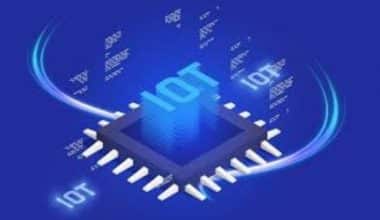The broad term for the procedures and services handled by an organization’s information technology (IT) department is “IT operations.” Hence, administrative procedures that support hardware and software are included in IT operations.
The IT operations team’s significant responsibilities are tech management, quality assurance, infrastructure management, and validation, which produce products that fulfil all client needs and expectations.
What is IT Operations?
IT operations (ITOps) is the process of implementing, managing, providing, and supporting IT services to satisfy internal and external users’ business demands. Along with technical management, application management, and service desk management, it is one of the four fundamental responsibilities of the IT department. It is included in the IT Infrastructure Library (ITIL) best-practices framework for IT service management.
What Is the IT Operations Process?
An organization’s IT department runs the ITOps process to maintain internal and external IT systems. The process includes the following:
- Incident management: refers to businesses maintaining control over the whole lifecycle of incidents. The incident management procedure aims to swiftly fix problems and deliver the IT service to the user.
- Access management: ISMS policies allow authorized users to access a service while denying unauthorized users. It’s also called identity and rights management.
- Problem management: prevents incidents and mitigates their effects. It involves reviewing incident reports and IT service management data to identify major issues.
- IT operations control: They are to monitor and manage an organization’s IT services and the infrastructure that supports them. That includes the daily activities of applications and infrastructure components.
- Facility management: The process includes all steps required to maintain a company’s physical space. It also covers the facility’s environmental monitoring, power, cooling, and heating management.
- Technical management: delivers technical expertise and service to improve the maintenance of the IT infrastructure.
What Are the Main Components of ITOps?
The main components of ITOps are:
- IT infrastructure: IT infrastructure is the hardware, software, and networks that support an organization’s IT activities.
- Systems management: entails overseeing and maintaining all servers, databases, and applications that are part of an IT infrastructure.
- Application management: This is overseeing and preserving a company’s software applications.
- Data management: The management of an organization’s data, including its storage, backups, and security, falls under the category of data management.
IT Operations Management
IT operations management (ITOM) is the management and strategic approach to planning, building, and operating digital services, technology, components, and application requirements in organizations. ITOM involves a unified information technology strategy encompassing business management teams, programming talent, and system administration employees required for maintaining services daily in required operations.
ITOps management focuses on various functions, including:
- Network infrastructure management: This function involves managing the network services required for internal and external business communications and the hardware and software infrastructure that supports them.
- Help desk operations: This function covers incident response, event response, request fulfilment, planning and maintaining data backups, user account management, system access, and disaster recovery.
- Endpoint management: This includes managing servers, desktops, laptops, mobile, and IoT devices and ensuring user access to storage.
- Services and service issue management: IT operations management is responsible for communicating information about incidents, managing data back-ups, implementing disaster recovery plans, and controlling the provision of user-profiles
- Server and device management: This includes purchasing, configuring, and maintaining hardware, software, and other resources required for the internal business operations, productivity, and customer support of a complex organization.
IT Operations Model
An IT operations model, or information technology operating model, is the unique configuration of people, processes, and infrastructure used to conduct the day-to-day operations of an organization. An operations model puts the business model into action and carries it out.
An IT operations model illustrates how an organization uses information and technology capabilities to achieve its strategic goals. It translates strategic intent into operational capabilities and serves as the foundation for execution, providing a clear guide for the enterprise leadership team, line managers, and operational teams.
Advantages of IT Operations Models
- Using and organizing resources according to a plan
- Determining a company’s core competencies
- Influencing how a business makes its investment decisions
- Reducing costs and enhancing business performance
- Tracking the business’s overall health and performance
- Sharing the company’s mission with stakeholders
- Laying the groundwork for defining more specific processes
There are four key elements of an IT operations model:
- IT processes: procedures to gather business requirements, develop products/applications, procure products/applications, provide IT support, and deliver and support enterprise architecture
- IT governance: key roles involved in ensuring information flow from business into IT
- Organizational structure: how IT functions are organized and interfaced with each other
- Infrastructure: The underlying technology and resources used to support and deliver IT services
Designing an IT operations model involves conducting detailed interviews and meetings with key stakeholders from both business and IT to understand their needs and requirements. Successful IT operations model transformations should emphasize fluidity, value creation, and resilience.
What Is the Difference Between IT Operations and Management Operations?
ITOps and management operations differ in their organisational scope, focus, and responsibilities.
IT Operations
IT operations, or IT operations management (ITOM), is a strategic approach to managing an organization’s information technology needs, including planning, provisioning, and managing IT resources, digital services, networking, and IT infrastructure. ITOps defines how an organization manages software and hardware. Also, it provides IT support such as network administration, device management, mobile contracting, and help desks.
Management Operations
Management operations, also known as IT service management (ITSM), are a broader range of techniques enterprises use to provide high-quality services internally and externally, focusing on infrastructure, resources, and the strategic development of a network. ITSM processes include incident management, change management, IT asset management, service desk management, and service request management.
The key differences between ITOps and management operations are as follows:
- Scope: IT operations management focuses on the daily management and tasks of an organization’s IT infrastructure, while ITSM encompasses a wider range of techniques for providing high-quality services.
- Focus: IT operations management is mainly concerned with the performance, efficiency, and availability of IT resources and services, while ITSM concentrates on the strategic development of a network.
- Responsibilities: IT operations management handles endpoint management, facilities management, and technical management, while ITSM processes include incident management, change management, and IT asset management.
What Does an IT Operations Manager Do?
An operations manager is an expert who ensures that everything goes smoothly without any difficulties. They address customers’ demands for cost-effectiveness while maximizing processes and procedures.
The responsibilities of an ITOps manager include the following:
- Create operational and strategic goals.
- Analyze financial information and use it also to increase profitability.
- Manage predictions and budgets.
- Handle quality controls and keep an eye on production KPIs.
- Hire, train, and manage personnel, and develop methods to improve customer service.
- Monitoring the performance of systems and network infrastructure
- Accountable for managing devices and passwords
What Do I Need to Do to Be an IT Operations Manager?
Here’s what you need to do to become an ITOps Manager;
#1. Earn a Bachelor’s Degree
You can receive the education and training required to become an IT operation manager by enrolling in a bachelor’s degree program at an approved institution or university.
A Bachelor of Science in information technology, computer science, information systems, or a similar discipline is the degree of choice for most aspiring ITOps managers. You can learn computer programming languages, cybersecurity standards, and maintaining information systems with the help of this degree.
#2. Look into Acquiring an Advanced Degree
Pursuing a master’s degree can make you stand out from other candidates and give you a more in-depth education in IT practices and management techniques.
To supplement the education they receive during their undergraduate studies, many aspiring IT operation managers pursue a master’s degree in business administration or operation management.
#3. Acquire IT Industry Experience
Do this by finding entry-level IT jobs and applying for any that catch your attention. Many IT operation managers have five or more years of IT experience before applying for management jobs.
Entry-level IT positions include cybersecurity analysts, network technicians, and IT technicians. You can hunt for IT jobs by contacting local businesses with IT departments or checking their websites for job openings. Additionally, you can look for IT job possibilities online, which provides a wide range of options.
#4. Find Work as an IT Operations Manager
IT operation managers can work at almost any company that uses IT and computer systems, so it is important to research companies and contact IT departments to see if they have any job openings. Additionally, you can use an internet search engine to find employment opportunities near you.
IT Operations Manager Salary
The salary of an IT Operations manager in the US ranges from $85,000 to $122,000, with top managers earning a salary of $140,500 annually.
There are opportunities for an operations manager to earn a higher salary and advance based on experience, location, and skill level. Also, the organization where the operations manager work determines their salary range.
Is IT Operations Manager a Good Job?
People who enjoy working in a company’s background can choose a job as an operations manager. You would have the freedom to work in practically any industry, which is essential to the success of any company, large or small. Also, the salary range for an operations manager is good so, it is a good career to pursue.
An operation manager directs all activities related to producing a company’s goods and/or services.
IT Operations Analyst
An operations analyst is a professional who examines policies and procedures, examines data, and produces reports with recommendations to enhance how a company operates.
Some responsibilities of an IT operations analyst include the following;
- The analyst determines the needs of operations and areas for improvement
- An operations analyst collects data through employee interviews, reading corporate reports, and observing workflows.
- The analyst has to choose the best analysis techniques for operations, relevant data, and information.
Skills for an IT Operations Analyst
There are several essential skills that you should possess to be successful in the role of an IT operations analyst. They can be categorized into hard skills and soft skills.
Hard skills: technical knowledge, computer skills, SQL knowledge, system architecture, and methodologies
Soft skills: strong organizational skills; analytical skills; communication skills; quick learners; teamwork abilities; interpersonal skills
What Is the Difference Between DevOps and ITOps?
The main difference between DevOps and ITOps is that DevOps emphasizes team cooperation to enhance automation and deployment processes, while ITOps focus on technical infrastructure.
Other differences between DevOps and ITOps include the following:
- DevOps teams are composed of DevOps engineers, with more variation in how organizations structure and manage them than ITOps teams.
- ITOps focus on deploying systems, while DevOps focuses on the software delivery process, streamlining processes for design, coding, testing, and deployment.
- DevOps tools optimize software delivery, while ITOps tools focus on monitoring and managing production environments.
What Are the Six Components of the IT Industry?
The components of IT are as follows:
- Hardware: Hardware represents the physical components of information systems, some of which are further visible or touchable, and some others are not.
- Software: Organizations run theiroperations using applications, operating systems, as well as other software programs.
- Data: Organizations use data to make decisions, which can be analyzed to improve the organization’s effectiveness generally.
- Network communication: Networking communication is a crucial component of an information system, as it is rather important for the system’s operation.
- People: Organizations use information systems to create value and improve productivity, with users, technical developers, and business professionals involved in development and management.
- Processes: Businesses must innovate to increase sales, reduce expenses, and integrate information systems.
- IT SERVICE MANAGEMENT: Definition and Processes
- SALES OPERATIONS: Definition, Strategy, Management
- OPERATIONS MANAGEMENT: Duties and Salary of an Operations Manager
- SECURITY OFFICER: Definition, Duties, Salary, Skills & Resume
- TECHNICAL DEBT: Meaning, Examples, Types & How to Reduce it






